Gardening Tips August UK: Fresh Ideas for a Thriving Garden
Gardening in August in the UK brings unique tasks and opportunities. From maintaining the beauty of your flower beds to keeping an eye on potential pests, you have plenty to keep you busy. Proper care and timely tasks can ensure your garden remains vibrant and healthy as summer transitions into autumn.
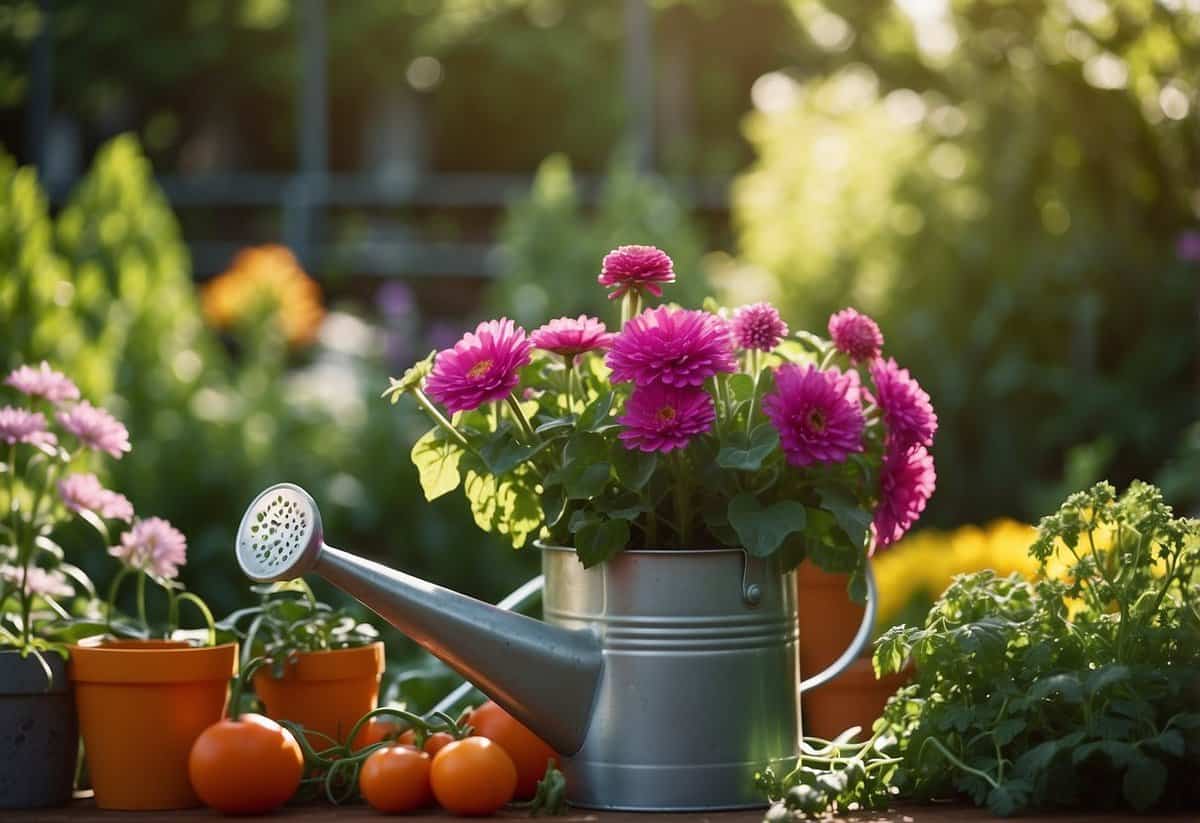
You’ll find that August is an excellent time to prepare for the cooler months ahead. With the right guidance and a few practical tips, your garden can thrive well into the following season. Whether you’re growing vegetables, fruits, or flowers, there are essential actions to take this month.
1) Water in the Early Morning

Watering your garden in the early morning is ideal. This is because the cooler morning temperatures reduce the amount of water lost to evaporation. Your plants can absorb more moisture before the heat of the day sets in.
Morning watering also helps plants deal with the heat. The water travels up from the roots to the leaves, keeping them refreshed during the warmer parts of the day.
You can read more about effective summer garden watering on Growing Family.
2) Use mulch to retain moisture
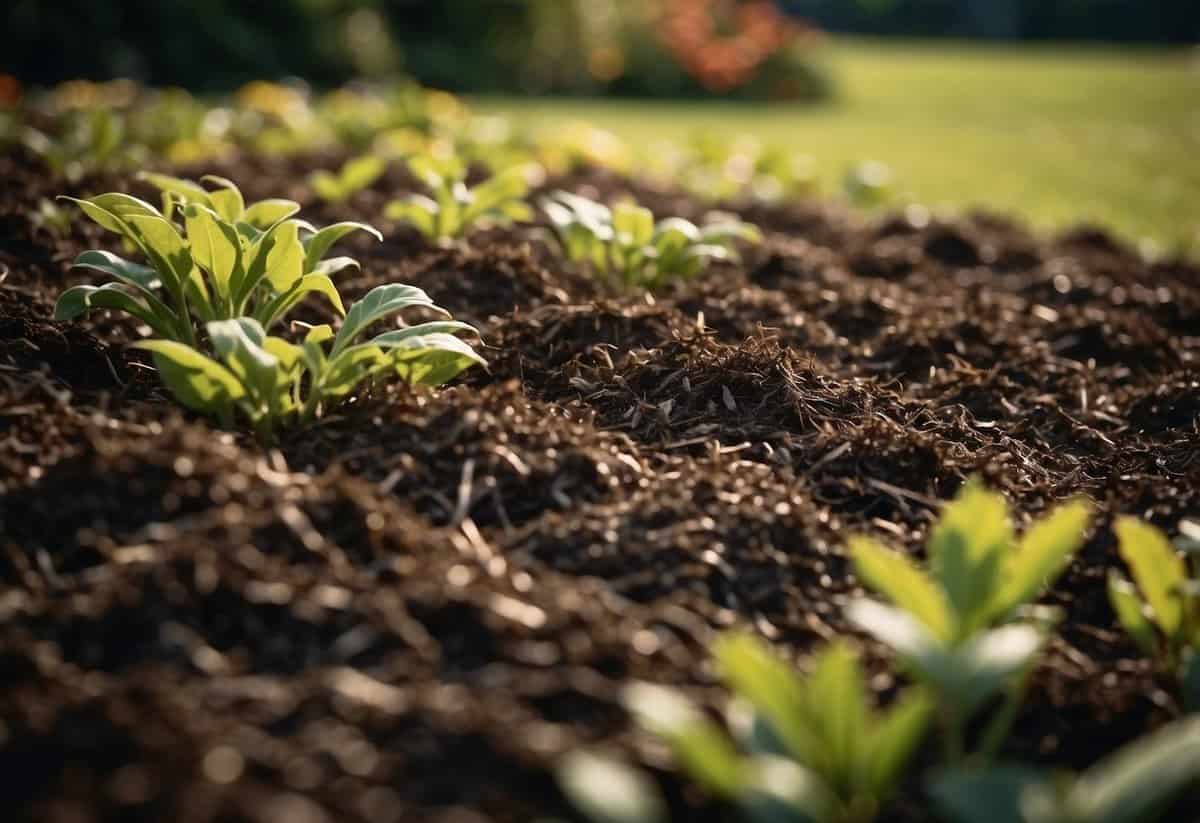
Mulch can be very helpful for your garden, especially in August when it’s usually hot and dry.
By adding mulch around your plants, you lock in moisture. This helps keep the soil damp longer, reducing the need for frequent watering.
Additionally, mulch serves as a barrier against evaporation, protecting your plants from drying out under the summer sun. Mulch can be made from materials like wood chips, straw, or compost. Just make sure it doesn’t touch the stems or trunks directly to prevent rot. Learn more about mulching benefits from the Royal Horticultural Society.
3) Prune Dead Flowers

In August, your garden is full of blooms. To keep it looking fresh, prune dead flowers regularly.
When you remove faded flowers, it encourages plants like roses and Dahlias to produce more blooms. This keeps your garden colorful throughout late summer and into early autumn.
Deadheading also helps prevent diseases and directs the plant’s energy into healthy growth. With just a little effort, you give your garden a beautiful boost. Learn more from RHS Gardening.
4) Feed plants with a balanced fertilizer
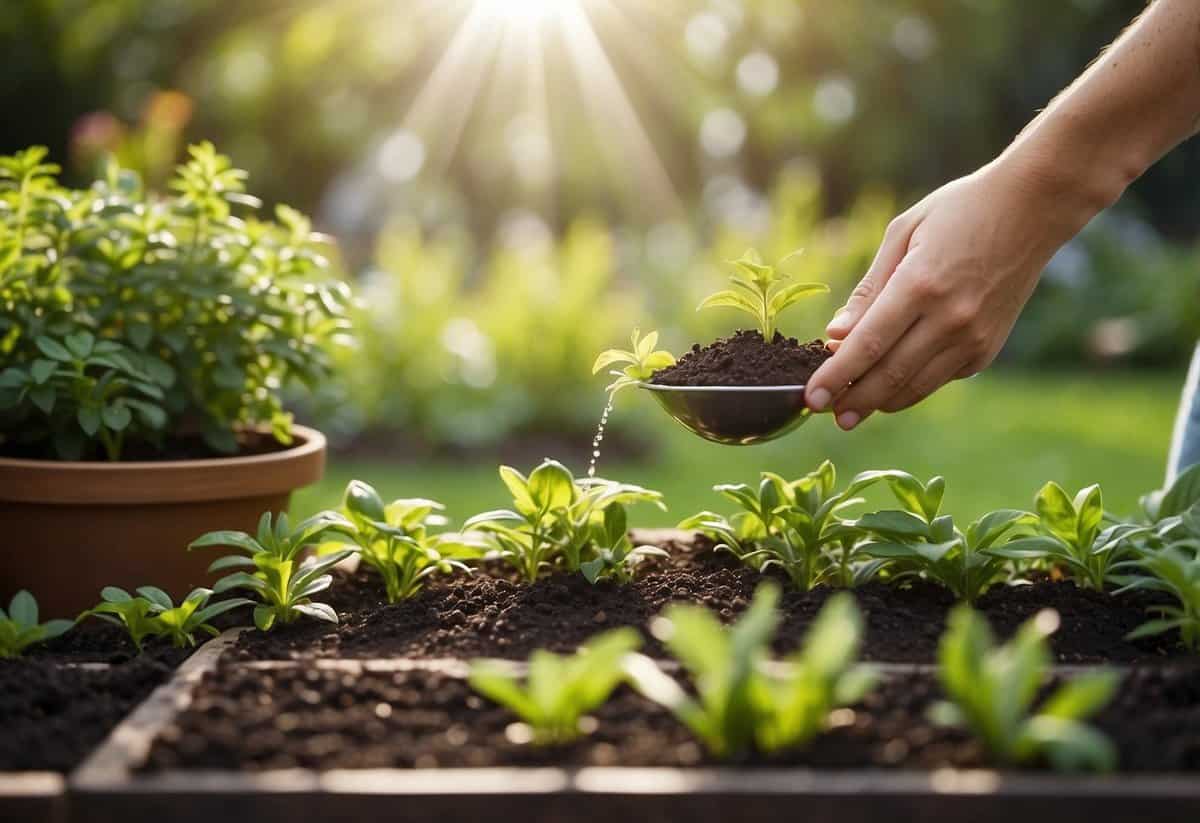
In August, your garden plants will benefit from a boost. Using a balanced fertilizer helps flowers, fruits, and vegetables grow strong. Look for one with equal parts nitrogen, phosphorus, and potassium.
Liquid fertilizers can be mixed with water for quick absorption. BBC Gardeners’ World Magazine recommends regular feeding for the best results. Happy gardening!
5) Harvest fruits and vegetables regularly

In August, your garden is likely brimming with produce ready to be picked. Regular harvesting keeps plants productive and healthy.
Pick ripe tomatoes and cucumbers as soon as they’re ready. Watch for signs of diseases like blossom end rot on tomatoes.
Harvest second early and maincrop potatoes. If you notice potato blight, pick and destroy the affected plants right away.
Keep an eye on your grapes. Protect them from wasps and other pests.
Tayberries are at their peak. Enjoy them fresh or use them in jams and desserts.
6) Check for pests daily

In August, pests are very active. Take time each day to inspect your plants. Look for signs of glasshouse whitefly, leafhopper, red spider mite, mealybugs, and scale insects.
Clean up fallen leaves and spilt compost from benches and floors. This can help stop pests and diseases from spreading. Keeping your garden tidy can make a big difference.
For more details on which pests to watch for, visit RHS Gardening.
7) Plant late-summer vegetables
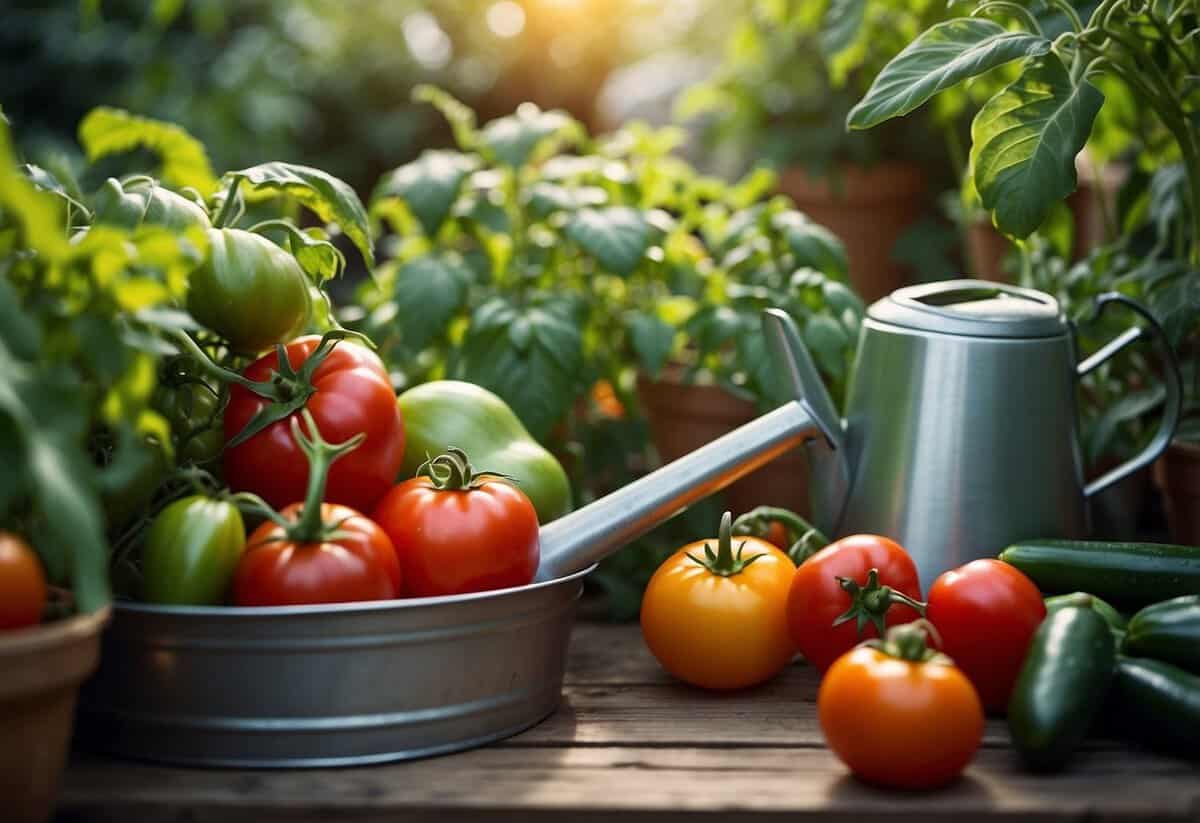
In August, you can still plant several vegetables for late summer and early autumn harvests.
Kohlrabi and spinach are great options. Kohlrabi is easy to grow and can handle the cooler weather. Spinach can provide fresh leaves and even survive frost.
You might also consider planting parsnips. They need to be planted soon since this is the last chance until next spring.
Cauliflower is another good choice. Make sure to get it in the ground quickly for a successful harvest.
8) Trim Hedges and Bushes

August is a good time to trim your hedges and bushes. By now, many plants have had a full season of growth and could use a tidy-up.
For smaller hedges, sharp garden shears are perfect. Larger hedges might need electric or petrol-powered trimmers.
Always cut the sides first, starting at the bottom and working your way up. Keep your tools clean and sharp, and remember to taper taller hedges slightly narrower at the top. For more details, check out these trimming tips from RHS Gardening.
9) Rotate your crops

Rotating your crops is crucial for a healthy garden. It means not planting the same type of vegetable in the same spot every year.
This helps prevent pests and diseases from building up. Different crops use different nutrients from the soil, so rotating them keeps the soil fertile.
To start, divide your garden into sections. Group crops like brassicas (cabbage, kale) together in one section. Move them to a new section each year.
This simple practice keeps your garden thriving. For more details, check out this guide on crop rotation.
10) Add compost to soil

Adding compost to your soil is a great way to boost its health. Compost improves soil structure and adds essential nutrients. You can use home-made compost or store-bought options.
Start by sprinkling compost on top of the soil. A 5 cm layer is usually enough. Then, spread it evenly with a rake for best results.
Compost also helps retain moisture and deter weed growth. For established plants, simply pour compost around their base. Frequent turning of the compost can help it decompose faster and be more effective.
Learn more about adding compost to your garden.
Preparing the Garden for August

August in the UK often brings warm, dry weather, making soil preparation and a thoughtful planting schedule crucial for your garden’s success. Here’s how you can get your garden ready for this month.
Soil Preparation
Begin by turning the soil to aerate it, helping your plants’ roots get the oxygen they need. This also makes it easier for water to reach the roots. Adding compost can enrich your soil with necessary nutrients, promoting healthy plant growth.
Mulching is essential to help your garden retain moisture during the hot days of August. Lay a 2-3 inch layer of mulch around your plants. This not only conserves water but also suppresses weed growth and keeps the soil cool.
Check the pH levels of your soil using a home testing kit. Most plants thrive in slightly acidic to neutral soil. If the pH is off, you can amend the soil with lime to increase alkalinity or sulfur to increase acidity.
Finally, ensure your soil is well-drained. Waterlogging can damage plant roots. If necessary, create raised beds to provide better drainage.
Planting Schedule
August is an excellent time to sow autumn vegetables like spinach, lettuce, and radishes. These crops grow quickly and can be harvested before the first frost. Use a planting calendar to time your sowings properly.
Continue to water your garden regularly, focusing on the base of plants to avoid promoting mildew on the leaves. Consider setting up an automatic watering system if you plan to be away for extended periods.
Clean up any fallen leaves and debris. This helps prevent pests and diseases from taking hold in your garden. Compost these materials to reuse as natural fertilizer.
For flower gardens, plant late-blooming perennials like asters and chrysanthemums. These can add vibrant color to your garden as the summer winds down.
Watering and Maintenance
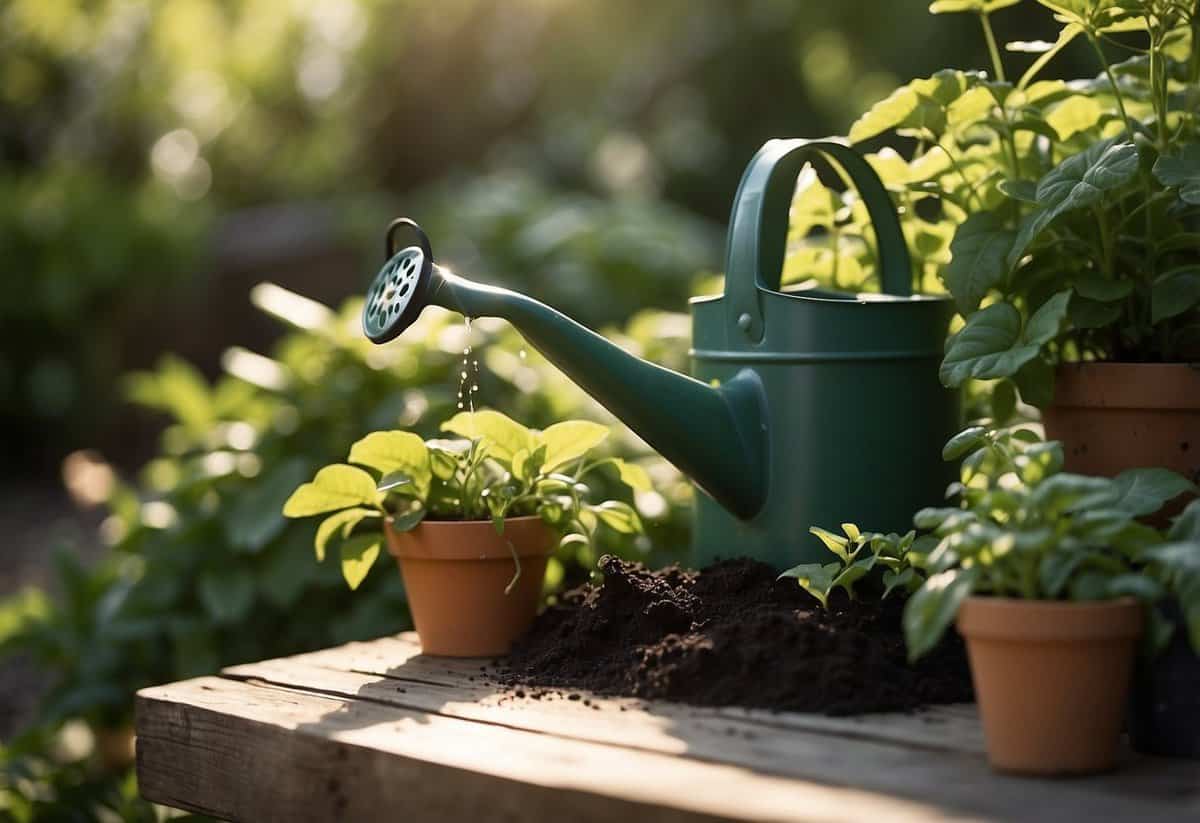
In August, managing water and maintaining your garden is key. Learn the best times and methods for watering, and how to keep weeds at bay.
Optimal Watering Techniques
Watering your garden properly can make a huge difference. It’s best to water in the late evening or early morning. This helps because cooler temperatures reduce evaporation, allowing water to reach the roots better.
Using rainwater or grey water is also ideal. You can collect rainwater in barrels to save on costs and conserve resources. When watering, ensure you soak the soil thoroughly rather than just wetting the surface. This helps plants develop deeper, stronger roots.
Be mindful not to overwater, especially during rainy spells in August, as it can lead to root rot or fungal issues. Regularly check the moisture level of your soil by sticking your finger in an inch or two.
If you’re going away on holiday, consider setting up a drip irrigation system or asking a neighbor to help out. This ensures your garden stays well-watered without the risk of overdoing it.
Weed Control
Keeping weeds under control in August is vital for healthy garden growth. Weeds compete with your plants for nutrients, water, and sunlight.
A good method is to weed after a rainfall when the soil is soft. This makes it easier to remove the entire root, preventing them from growing back quickly.
Using mulch can also be very effective. A layer of mulch around your plants not only retains moisture but also suppresses weed growth. Organic mulches, like straw or compost, add nutrients to the soil as they decompose.
Remember to regularly check for weeds and deal with them promptly. Hand-pulling is often best for small areas, while a hoe or garden fork can help with larger sections. Consistent weeding will keep your garden looking neat and your plants thriving.
Protecting Plants from Pests

August can be a challenging month for managing garden pests. By using natural pest control and knowing about common pests, you can keep your plants healthy and thriving.
Natural Pest Control
Using natural methods to control pests is both eco-friendly and effective. Encouraging beneficial insects like ladybirds and hoverflies helps keep harmful pests in check. These insects eat aphids and other small bugs that can damage your plants.
Nematodes are another natural option. They can be used to control pests like vine weevils and leatherjackets. You simply add these tiny worms to the soil, where they target and kill the pests.
Mulching your soil can also help. It prevents pests and diseases by keeping the soil moist and blocking fungal spores. Using organic mulches, such as compost or straw, adds nutrients to the soil and improves its structure.
Common Pests in August
In August, watch out for several common pests in your garden. Glasshouse whitefly and red spider mites are frequent greenhouse pests during the summer. Regularly check your plants for these tiny insects and remove any infested leaves.
In your garden, look for signs of mealybugs, scale insects, and leafhoppers. These pests can weaken plants by sucking their sap. Cleaning up fallen leaves and plant debris helps stop these pests from spreading.
Watering your plants properly can also make a difference. Stressed plants are more vulnerable to pests, so make sure your garden is well-watered, especially during the hot and dry month of August.







